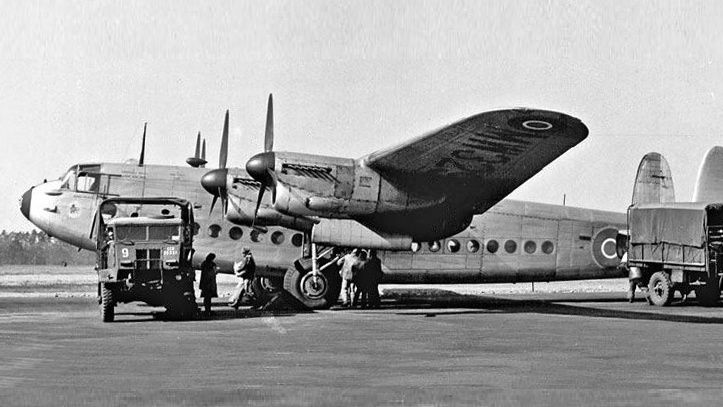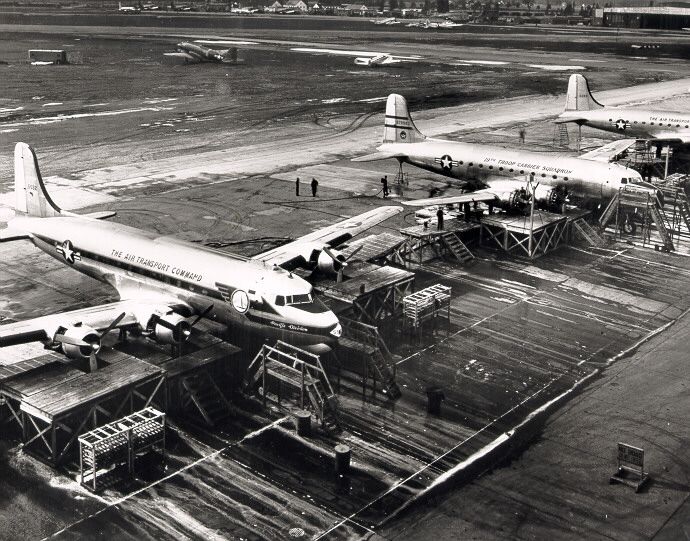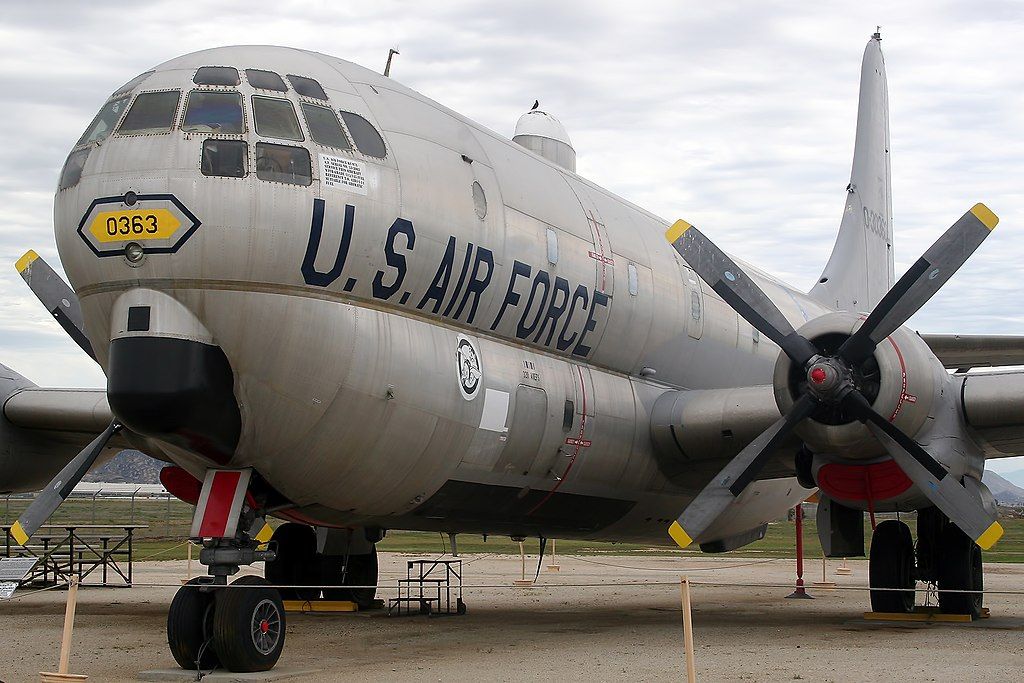Summary
- Many aircraft participated in the Berlin airlift, which took place between June 1948 and May 1948.
- They include the French Amiot AAC.1, British Avro York, Douglas C-47 Skytrain, and Douglas C-54 Skymaster.
- The Boeing YC-97A Stratofortress saw action during the airlift, as it was tested during the effort.
Just a few years after the end of World War II, with Germany being split between several countries and with the Iron Curtain setting on Eastern Europe, the Western powers-controlled part of Berlin was being blockaded by the Soviets. According to the United States (US) Department of State (DOS), the crisis in Berlin began on June 24, 1948, when “Soviet forces blockaded rail, road, and water access to Allied-controlled areas of Berlin.”
In response, the US and the United Kingdom began to airlift supplies into the city from their respective bases in Western Germany, with many iconic pictures depicting aircraft lined up at the now-closed Tempelhof Airport (THF). Several iconic aircraft participated in the Berlin Airlift; here are five of the best.
6 Amiot AAC.1
Cargo capacity: 3 tons or 1-1/2 tons
The Amiot AAC.1 Toucan was the French-built variant of the Junkers Ju52 German transport aircraft, which the French army later inherited after the end of World War II. The main problem was that the French were already involved in a conflict in Indochina or modern-day Vietnam. As a result, only a few Amiot AAC.1’s participated in the Berlin Airlift. Still, the Toucan was seen hauling supplies to the blockaded city, making it the only French-built aircraft to aid Berlin.
Cargo Capacity | Range |
3 or 1-1/2 tons | 1,500 km (932 mi) |
According to the Smithsonian National Air and Space Museum, the Junkers Ju52 had a cargo capacity of 3 tons, while the Polish Aviation Museum noted that the Toucan had a range of 1,500 kilometers (932 miles). However, Roger Miller, who wrote ‘To Save a City: The Berlin Airlift, 1948-1949’, noted that the Amiot AAC. 1’s cargo capacity was small and between 1 and 1 and a half tons, adding that the French Air Force’s participation in the airlift was a “minor effort.”
5  Douglas C-47 Skytrain
Douglas C-47 Skytrain
Cargo capacity: 3 tons
According to the Smithsonian, the Douglas C-47 was one of the first aircraft to participate in the airlift three days after the Soviets began blockading Berlin. But the aircraft had one glaring weakness, namely its relatively low cargo capacity of 3 tons, per the United States Air Force’s (USAF) historical support division.
Cargo Capacity | Range |
3 tons | 2,600 km (1,600 mi) |
The division also noted that C-47s “made 32 flights into Berlin with 80 tons of cargo, mainly powdered milk, flour, and medicine.” Furthermore, it pointed out that Major General Curtis LeMay had 102 C-47s at his disposal. Air & Space Forces magazine talked to Paul Jarret, who participated in the airlift, with the ex-service member remembering that the first several weeks of the mission had “the worst rain, fog, and no relief,” adding that until the Douglas C-54 Skymaster showed up, “it was tough.”
4  Avro York
Avro York
Cargo capacity: 8 tons
The Royal Air Force (RAF) was also one of the participants in the airlift, with the branch deploying its Avro York aircraft to carry supplies into the city, among other types. According to Miller, the Avro York underwent changes during the airlift, which raised its “average load to a little over eight tons.” Miller also pointed out that the addition of the Yorks allowed the RAF to “dramatically” increase its cargo-carrying capability into the city.
Cargo Capacity | Range |
8 tons | 4,800 km (3,000 mi) |
Yet, bad weather, as well as maintenance issues with the aircraft, restricted the aircraft’s sorties. The author noted that the Avro York averaged 77 sorties instead of the planned 120 during the second phase of Operation Plainfare, which lasted between July 4 and July 19, 1948. Miller added that RAF and civilian-owned Avro Yorks carried food, coal, and other supplies to British service members stationed in Berlin.
Photo: BAE Systems
3 Douglas C-54 Skymaster
Cargo Capacity: 10 tons
According to the Smithsonian, while the Douglas C-47s were the first to respond to the call, Douglas C-54 Skymasters were phased in, as they were more favored than the C-47s. The reason was simple: the four-engined aircraft could carry up to “10 tons of supplies – four times the capacity of a C-47.” The added cargo capacity enabled the C-54 to become one of the most prominent aircraft that participated in the airlift, with the Smithsonian adding that it carried most of the city’s coal shipments, with the US Navy (USN) also providing two squadrons of their C-54s, which were designated as the R5D.
Cargo Capacity | Range |
10 tons | 5,300 km (3,300 mi) |
However, the USAF did not have as many pilots as needed to ensure that plenty of supplies reached the city, so the service began training flight crews at Malmstrom Air Force Base, Montana, the US. According to the Air & Space Forces magazine, many pilots who served in World War II began transitioning to the four-engined C-54s, “using mock air corridors, which were laid out across Montana’s landscape to simulate the approach to Berlin.”
Photo: USAF
2
1 Boeing YC-97A Stratofreighter
Cargo Capacity: 20 tons
While in limited numbers, the Boeing YC-97A Stratofreighter, a test aircraft that would end up being the C-97 Stratofreighter, was one of the largest aircraft to participate in the mission to help Berlin. Miller stated that the airlift “served as a test for another giant aircraft,” namely the YC-97A. The aircraft arrived in Germany on May 1, 1949, with the aircraft flying 23 missions and delivering 444.8 tons of cargo to Berlin.
Cargo Capacity | Range |
20 tons | 6,900 km (4,300 mi) |
On May 24, the single Boeing YC-97A Stratofreighter experienced an incident when engine issues forced it to make an emergency landing at RAF Gatow inside Berlin. The aircraft blew four tires and damaged the runway at the base, which closed it temporarily. After it received new engines, the YC-97A flew back to the US.
Notably, another giant, the Douglas C-74, participated in the airlift. However, the Air & Space Forces magazine stated that the aircraft completed 24 sorties and carried 429 tons of cargo into the city, just shy of the Boeing YC-97 Stratofreigther’s tonnage.

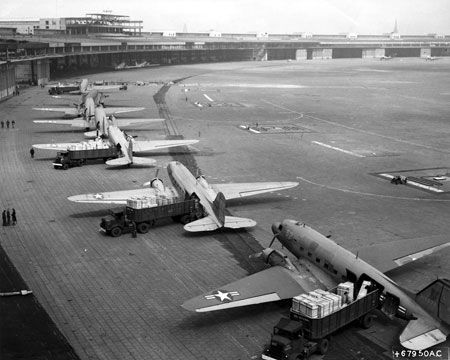 Douglas C-47 Skytrain
Douglas C-47 Skytrain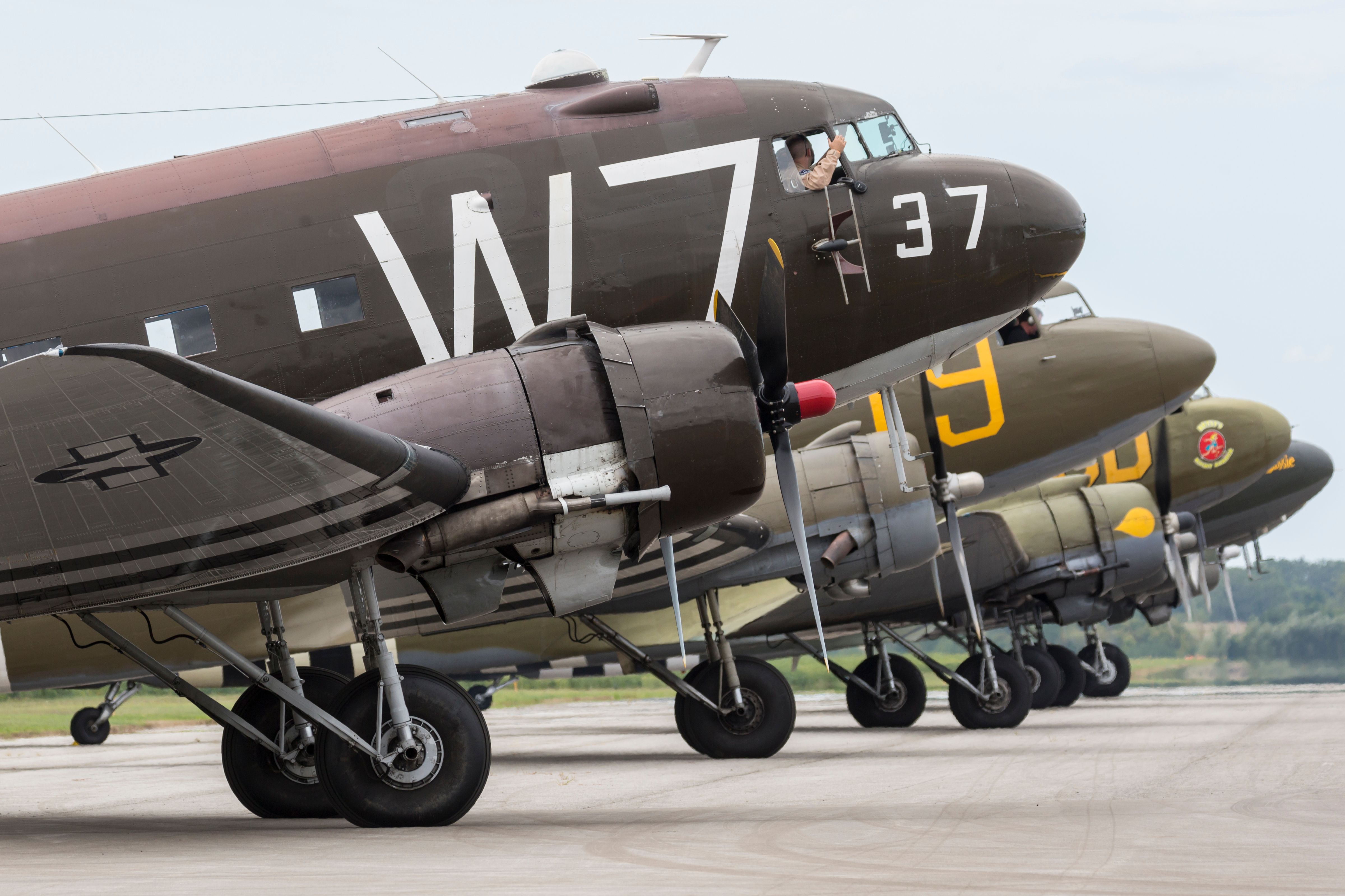 Avro York
Avro York